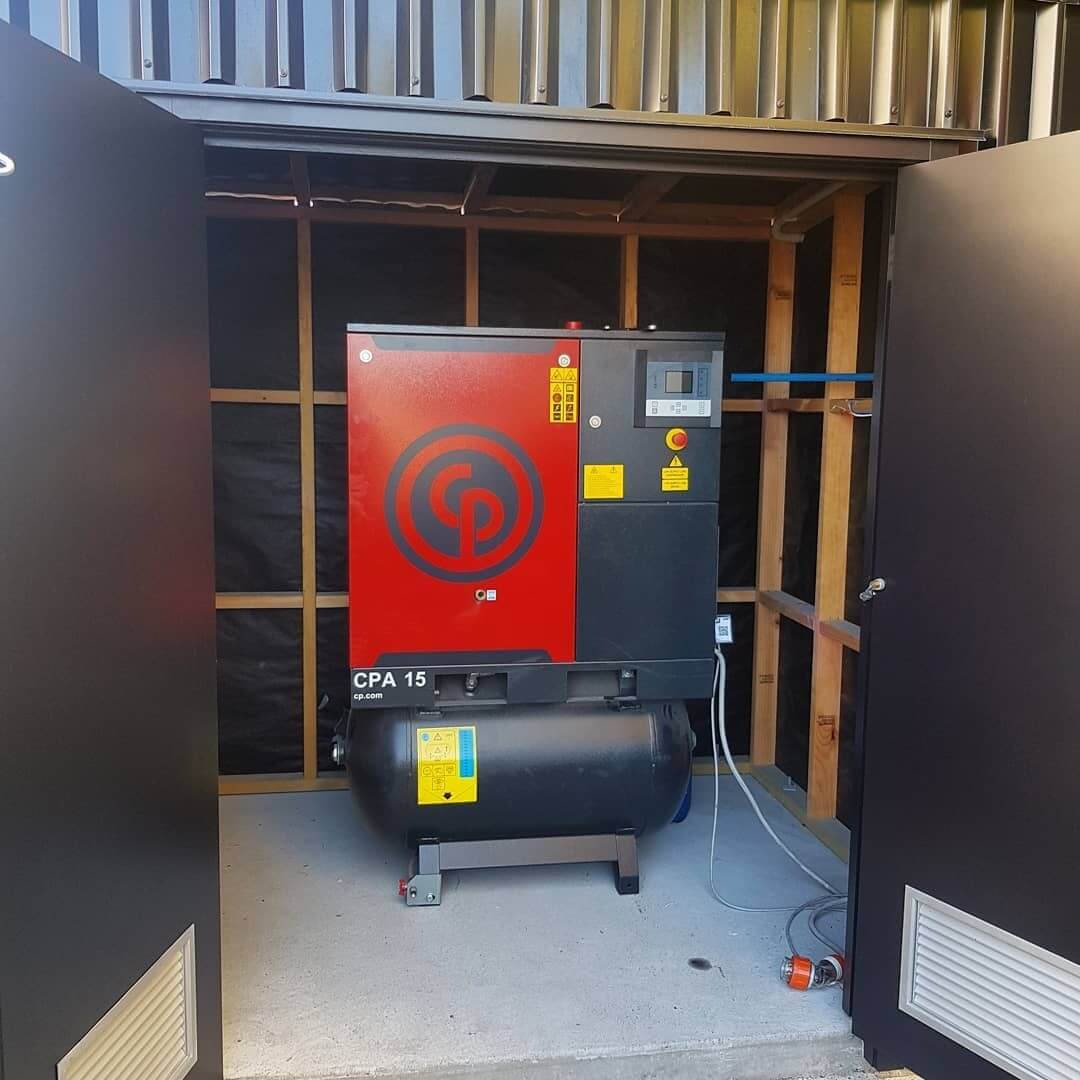Proportioning the Compressed Air Dryer
Trying to figure out which air dryer capacity is best for you? Here are some factors to consider. Read More…
Rotary screw air compressors are a type of rotary volume compressor and thanks to their reliability, long lifetime and
versatility, they are widely used in a lot of different industries. Compared to piston compressors, they are overall more efficient and
flexible. Find out the working principle of a screw drive compressor.

First of all, let us take a look at the rotary screw compressor element. The element consists of two rotors that look like helixes, each with a different shape and number of 'grooves'/'teeth' (usually one with 4 and one with 6 teeth). To put it simply, atmospheric air is sucked into this screw element and as the air progresses along the rotors, it gets compressed.
The screw element (block) consists of two rotors that are similar to a helix with a large climb with a different number of teeth. The most usual ratio of teeth is usually 4:6. As the air progresses along the rotors the air is compressed as the volume space between the rotor teeth decreases in the direction from the suction to the outlet.
The most widespread type of screw compressors are lubricated compressors with oil injection. For sensitive processes regarding the quality of compressed air non-lubricated compressors are used. The compression process, in case of a lubricated compressor, proceeds as follows:
The air circuit:
Air is drawn through the filter and an open inlet valve, into the compressor element and gets
compressed. A mix of compressed air and oil flows into the air receiver/oil separator via a check valve. The air is discharged through an
outlet valve via a minimum pressure valve and the air cooler. During loaded operation, a minimum pressure valve keeps the pressure in the
separator tank above a minimum value, required for lubrication. An integrated check valve prevents the compressed air downstream the valve
from being vented into the atmosphere during unloaded operation. When the compressor is stopped, the check valve and inlet valve close,
preventing compressed air (and oil) to be vented into the air filter.
The oil circuit:
In the air receiver/oil separator, most of the oil is removed from the air/oil mixture by centrifugal action. The remaining oil is removed by the oil separator. The oil is collected in the lower part of air receiver/oil separator, which serves as an oil tank. The oil system is provided with a thermostatic bypass valve. When the oil temperature is below its set point, the bypass valve shuts off the supply to the oil cooler and the oil cooler is bypassed. Air pressure forces the oil from the air receiver/oil separator through the oil filter and oil stop valve into the compressor element. The bypass valve starts opening the supply from the cooler when the oil temperature has increased to the set point. At approx. 15 ˚C (27 ˚F) above the set point, all the oil flows through the oil cooler. An oil stop valve prevents the compressor element from flooding with oil when the compressor stops.
Ash Air is here for your business longevity!
Do you have an idea for our #expertcorner? Let
us know!
Ash Air has been around in New Zealand since 1979, and we’ve grown into a nationwide company with international support and a reputation for quality and reliability.We look after all things compressed air for your business!
Ash Air's range of Chicago Pneumatic, Alup, Pneumatech, and Quincy compressors are used extensively around the world in industries ranging from oil and gas to food, automotive and farming, and we bring you these world class compressors here in the land of the long white cloud.Our technicians are compressed air equipment experts and are dedicated to addressing customer needs. Supported by a 13 locations nationwide, Ash Air offers one of the widest selections of compressed air equipment and parts available today in New Zealand.
With Ash Air compressors, you can count on reliability and high performance for even the most demanding applications. We focus our efforts on the following:
Talk to the team today:
Proportioning the Compressed Air Dryer
Trying to figure out which air dryer capacity is best for you? Here are some factors to consider. Read More…
Maintenance budget: 8 factors to consider
Just like any other equipment, a compressed air installation also requires the necessary maintenance work during its entire lifespan. Even though maintenance costs are only about 5 to 10% of a machine's annual operating costs, failure to budget for maintenance can have potentially disastrous consequences. Read More…
The air dyer is one of the most ignored cooler in the system. A dirty condenser will cause water in the lines, or worse it will cause complete dryer failure. Read More…
Why Replace CO2 with Nitrogen in your Brewery
Using nitrogen is not about fully replacing CO2, but it can reduce their consumption of CO2 by close to 70%. Using nitrogen is about sustainability. Creating your own nitrogen is easy and will reduce the use of a greenhouse gas, which is better for the environment. It will also save you money as early as month one adding that savings to your bottom line. Read More…
What do I need to know about ICONS?
ICONS: Intelligent Connectivity System: The insight into your compressed air system, wherever you are. Learn More about ICONS in this article here! Read More…
A question that is occasionally asked by our customers to Ash Air is 'what is the cost of compressed air?' This article looks at the product costs involved with compressed air, as well as minimising the energy cost of compressors and cost allocation. When looking at these factors, we need to realise what causes dropped efficiency of your compressor, leading to increased costs of compressed air. Read More…